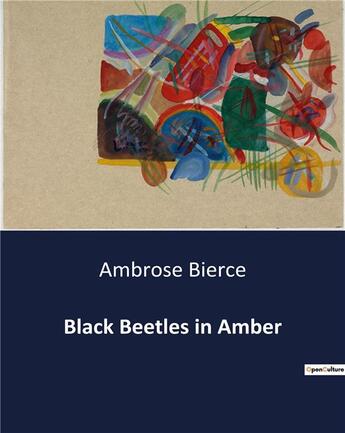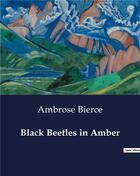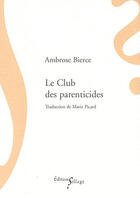-
Date de parution : 04/03/2024
-
Editeur :
Culturea
-
EAN : 9791041987818
-
Série :
(-)
-
Support :
Papier
Résumé:
"Black Beetles in Amber" by Ambrose Bierce is a collection of short stories that showcases the author's masterful command of the macabre, the mysterious, and the unexpected. Published in the late 19th and early 20th centuries, these tales reflect Bierce's unique literary style and his... Voir plus
"Black Beetles in Amber" by Ambrose Bierce is a collection of short stories that showcases the author's masterful command of the macabre, the mysterious, and the unexpected. Published in the late 19th and early 20th centuries, these tales reflect Bierce's unique literary style and his inclination toward exploring the darker corners of human experience.
At the core of "Black Beetles in Amber" is Bierce's fascination with the bizarre and the supernatural. The title itself, invoking the image of black beetles preserved in amber, sets the tone for a collection that delves into the timeless themes of mortality, fate, and the enigmatic nature of existence.
Each short story within the collection is a carefully crafted narrative that often defies conventional expectations. Bierce's storytelling is characterized by its economy of language, sharp wit, and a penchant for unsettling twists. The tales range from eerie encounters with the supernatural to explorations of the human psyche, inviting readers to confront the unknown and the inexplicable.
Notable stories within "Black Beetles in Amber" include "An Inhabitant of Carcosa," a surreal exploration of consciousness and identity, and "The Death of Halpin Frayser," a haunting tale of the supernatural. Bierce's ability to evoke a sense of foreboding and to subvert traditional storytelling conventions contributes to the enduring allure of this collection.
"Black Beetles in Amber" stands as a testament to Ambrose Bierce's legacy as a master of the short story form. His skillful blending of the eerie and the philosophical continues to captivate readers, inviting them to embrace the shadows and uncertainties that lie at the heart of the human experience.
Donner votre avis
















